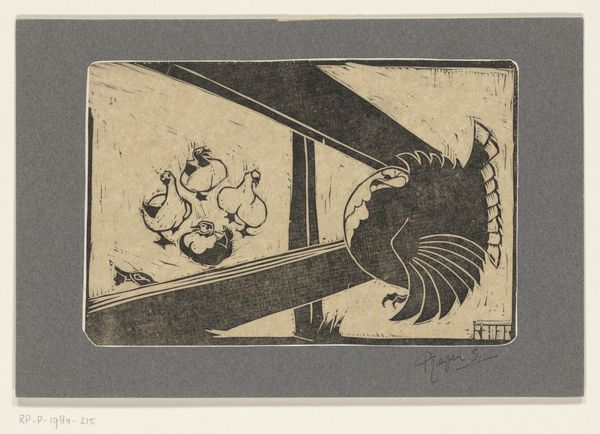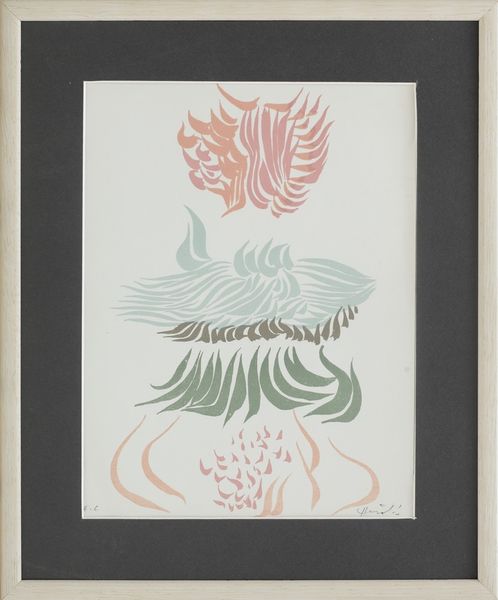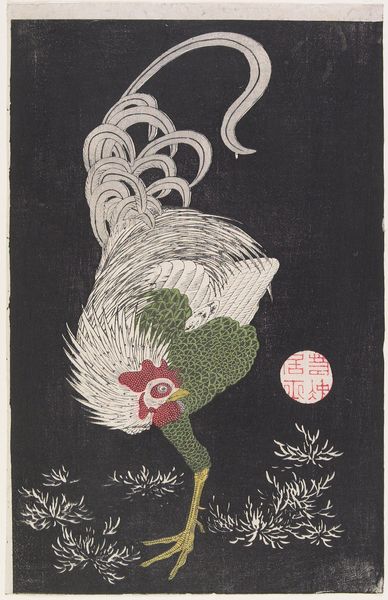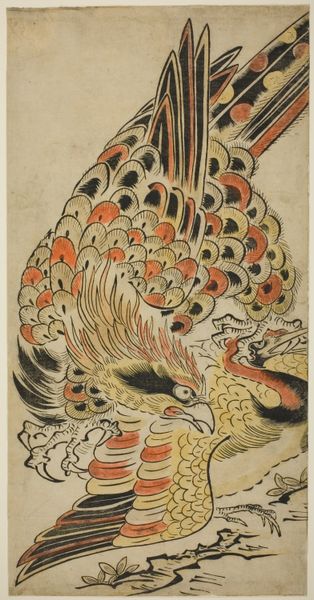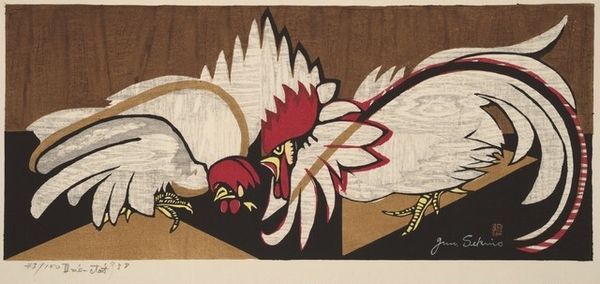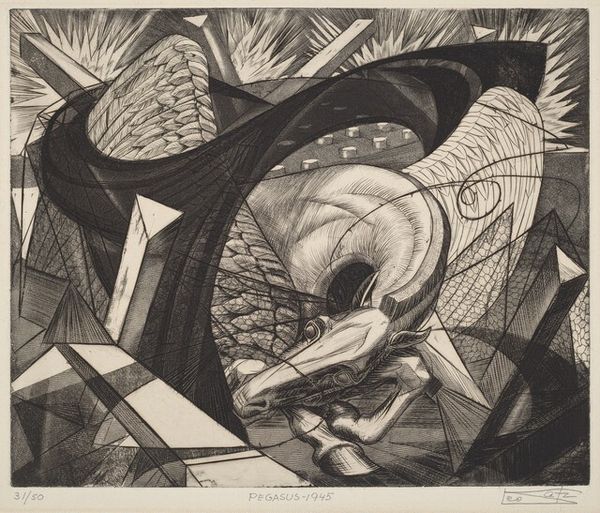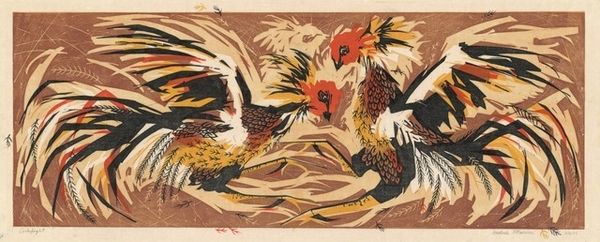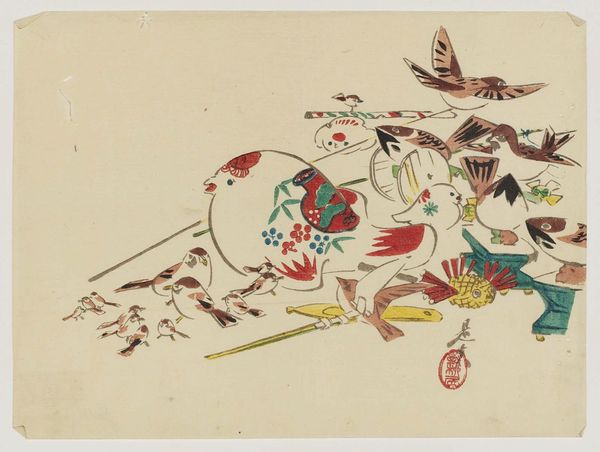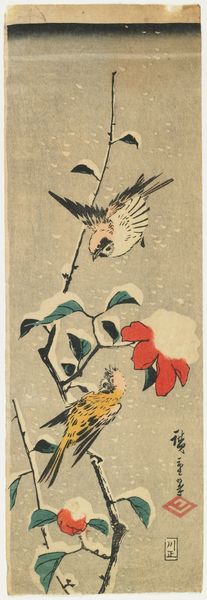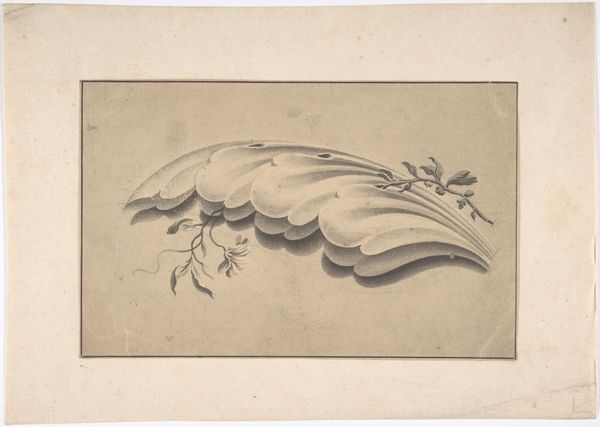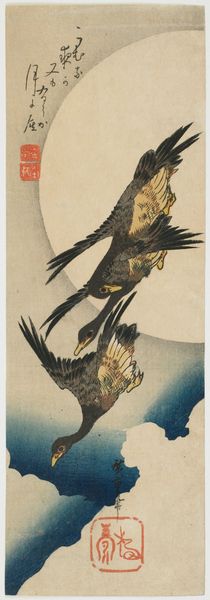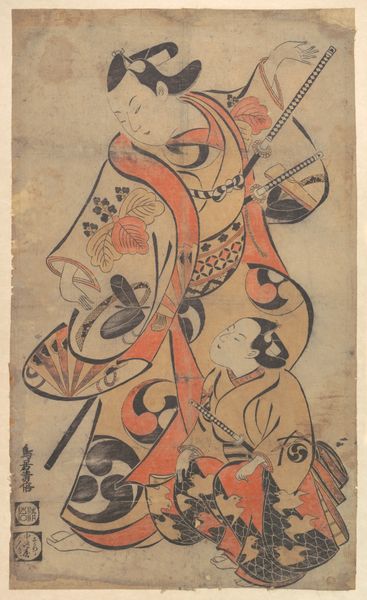
Copyright: National Gallery of Art: CC0 1.0
Editor: Jun'ichiro Sekino's 1956 woodcut, *Rooster's Family,* employs such striking shapes. There's almost a sense of modernist graphic design. What can you tell me about Sekino’s approach here? Curator: Well, it’s fascinating to consider Sekino’s engagement with ukiyo-e traditions through the lens of postwar consumer culture in Japan. Look at the materials themselves - the woodblocks, the inks. Were these resources readily available? How did their production influence the style we see? Editor: I hadn’t considered the practical aspects. Curator: The bold lines and flat planes, reminiscent of both traditional Japanese prints and, as you mentioned, a kind of pop art, can be seen as a response to both local craft traditions and to imported American design. Did Sekino view himself as elevating printmaking from craft to "high art?" What sort of workshops and production processes were in play to produce works like these? Editor: So the *making* of it tells a bigger story, almost like a social commentary? Curator: Exactly! Consider the labor involved in creating this image. It's a beautiful piece, but also a record of the artist's engagement with materials, processes, and a rapidly changing cultural landscape. It really moves beyond merely representing chickens. Editor: This focus on process gives me a totally new appreciation. I initially saw a playful, even decorative artwork. Now, I understand how much more complex its cultural production actually was. Curator: And that complexity invites further inquiry! We could look at how he combined traditional techniques and modern aesthetics for example. It never ends!
Comments
No comments
Be the first to comment and join the conversation on the ultimate creative platform.
